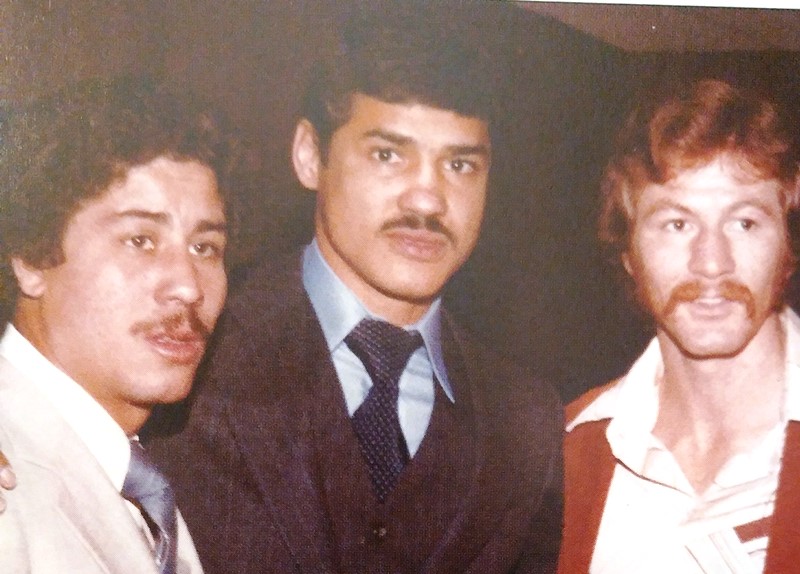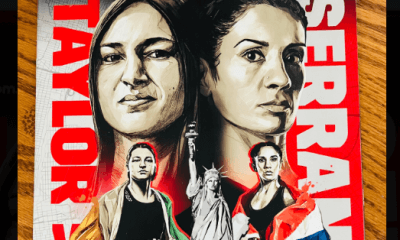Book Review
Book Review: “Latino Boxing in Southern California”
Modern boxing has existed for more or less 160 years after the Marquis of Queensbury rules were adopted. Since that time hundreds and perhaps tens of thousands of pages have been quilled or typed depicting the sport’s torrid and colorful history.

Modern boxing has existed for more or less 160 years after the Marquis of Queensbury rules were adopted. Since that time hundreds and perhaps tens of thousands of pages have been quilled or typed depicting the sport’s torrid and colorful history.
Prizefighters such as John L. Sullivan, Harry Greb and Georges Carpentier have had numerous novels written about their worthy exploits. Yet, though Southern California can match historic boxing footsteps with any region in the country, the heroes from Bakersfield to San Diego scarcely have been touched.
That’s where author Gene Aguilera steps forward.
Raised in East L.A. during the 1950s and 60s, the author saw firsthand many classic fights that took place in venues such as the Olympic Auditorium, Inglewood Forum and L.A. Sports Arena. And with his own eyes he saw the rise of Salvador Sanchez, Julio Cesar Chavez and Oscar De La Hoya.
Now he’s writing about the other heroes that fall into the cracks of forgotten exploits. Those pugilists who were not only of Mexican roots, but Latino fighters from areas like Nicaragua, Cuba and Panama.
Aguilera wrote a previous book Mexican-American Boxing in Los Angeles published in 2014. In Latino Boxing in Southern California, the subject matter parallels his previous work with many of the same heroes mentioned again and with the new heroes described and their contributions to fistic lore.
Los Angeles has always been a vibrant center for prizefighting. Even in the days when it was illegal and boxers were forced to fight outside the city limits in places like Burbank, Vernon and San Bernardino, the boxing scene was red hot.
The author chooses to write about the era that he actually lived from the 1950s to the present. In the first book and in this book he fills the mind and eyes with stories of the past when black and white newspaper photos were the norm and television fights had most of the population entranced with heroes like Sugar Ray Robinson and Kid Gavilan. In the Los Angeles area weekly shows had been going on for decades and continued even when Major League Baseball, the National Football League, and the National Basketball Association arrived. The sport of boxing thrived and held its fans captive with its own heroes such as Manuel Ortiz, Art Aragon and Keeny Teran. Then came a wave of Mexican fighters like Raul “Raton” Macias, Jose Becerra and Gaspar Ortega.
Wave after wave of Latin American fighters followed and still continue to venture north to the magnetic lure of fame, fortune and glory in the U.S.A.
Aguilera has seen these waves many times over. First as a child attending the fights with his parents, then as a youth taking one bus after another from his East L.A. neighborhood to the now closed Olympic Auditorium where prizefighting had been a staple since the late 1920s. He also was a regular patron at the Inglewood Forum that saw boxing first arrive in the late 1960s and at the L.A. Sports Arena that just recently was demolished in favor of a soccer stadium.
Today, a sort of renaissance is taking place with new venues replacing old but it’s important to realize that boxing has remained part of the fabric of Los Angeles and the rest of Southern California through its population explosion.
Each page written by Aguilera describes that former era with the names of fighters who have mostly passed away, but some remain.
One of the author’s former heroes is Ruben “El Puas” Olivares who has become his close friend. The pair make annual treks to Canastota, New York for the International Boxing Hall of Fame ceremonies. Olivares was involved in one of the biggest fights that ever took place in Los Angeles when he met Nicaragua’s legendary Alexis Arguello at the Inglewood Forum in 1974 for the featherweight world title. It remains one of the classic battles of all time in the City of Angels.
It’s just one of the memorable fights that Aguilera talks about. It’s not a thick book, but with its numerous photos, posters and quotes gathered throughout the decades it provides a marvelous companion for anyone who loves boxing history.
Truthfully, it’s one of the most important books ever written because it describes an era that is seldom touched regarding the Southern California region.
Why is it important?
Today, Southern California has become the heart and soul of boxing for the entire world, not just the U.S. Fighters arrive from almost every country in the world to practice the art of boxing in one of the more than 100 boxing gyms existing in the Golden State.
Latino Boxing in Southern California in essence, describes those early waves of prizefighters that continue today. This book helps explain why Southern California has become a hub for many elite boxers seeking fame and world titles. Perhaps soon Aguilera will write a book about this International flood of prizefighters that is taking place.
Latino Boxing in Southern California is rich in information and one of the most important works to ever touch the subject of pro boxing in the greater Los Angeles area.
The book is available at www.arcadiapublishing.com or via Amazon or at book stores.
Pictured left to right: Wilfredo Gomez, Alexis Arguello, and Danny “Little Red” Lopez
Check out more boxing news on video at The Boxing Channel
-

 Featured Articles4 weeks ago
Featured Articles4 weeks agoAvila Perspective, Chap. 330: Matchroom in New York plus the Latest on Canelo-Crawford
-

 Featured Articles3 weeks ago
Featured Articles3 weeks agoVito Mielnicki Jr Whitewashes Kamil Gardzielik Before the Home Folks in Newark
-

 Featured Articles22 hours ago
Featured Articles22 hours agoResults and Recaps from New York Where Taylor Edged Serrano Once Again
-

 Featured Articles4 weeks ago
Featured Articles4 weeks agoCatching Up with Clay Moyle Who Talks About His Massive Collection of Boxing Books
-

 Featured Articles5 days ago
Featured Articles5 days agoFrom a Sympathetic Figure to a Pariah: The Travails of Julio Cesar Chavez Jr
-

 Featured Articles3 weeks ago
Featured Articles3 weeks agoMore Medals for Hawaii’s Patricio Family at the USA Boxing Summer Festival
-

 Featured Articles1 week ago
Featured Articles1 week agoCatterall vs Eubank Ends Prematurely; Catterall Wins a Technical Decision
-

 Featured Articles4 weeks ago
Featured Articles4 weeks agoRichardson Hitchins Batters and Stops George Kambosos at Madison Square Garden





















